Brace yourself for some Cassandra-like hand-wringing about the benighted future of the arts.
In the arts, as in most things, there is a tendency among older folks like me to be nostalgic – to gripe that things aren’t as good as they used to be. When I was a student at Michigan back in the stone age, I remember sitting at the knee of the esteemed and aged film critic Andrew Sarris, who had come to lecture on campus, and hearing him say something I found astonishing: “All the great movies have already been made.” It was a depressing thought. Where did that leave us?
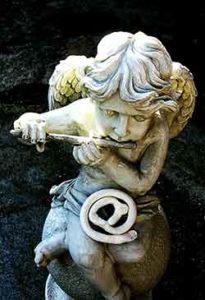 And I recall the art historian Rudolf Arnheim joining the Michigan faculty at about the same time. Back in the ’30s, Arnheim had written one of the first serious studies of cinema, Film As Art, in which he argued that the movies, like other arts, needed resistance in which to thrive, that it was only by working within its limitations that art could realize its greatness.
And I recall the art historian Rudolf Arnheim joining the Michigan faculty at about the same time. Back in the ’30s, Arnheim had written one of the first serious studies of cinema, Film As Art, in which he argued that the movies, like other arts, needed resistance in which to thrive, that it was only by working within its limitations that art could realize its greatness.
As the theory went, any artist who had complete license didn’t have to strategize how to use the medium to maximum effect. In his book, Arnheim even held brief against sound movies because the alleged handicap of silence forced filmmakers to find purely cinematic ways to express themselves. Of course, even then I realized that if you took his argument to its logical conclusion, you didn’t have to stop at sound or color. You might as well get rid of the image too. Work within that limitation and see what happens.
My point is that I know what it is like to hear solons pontificate about how much better the past is than the present. So I want to be clear that though I am an old fogey myself, I don’t think that the arts of yesteryear are necessarily any better than the arts today. The arts have always faced challenges and even dangers – social, political, financial, technological – and they have always managed to mutate and survive.
But if I don’t think the arts today are any worse or any better than they used to be, I do think that they have been facing some pretty daunting obstacles. One of those obstacles is the rise of mass entertainment.
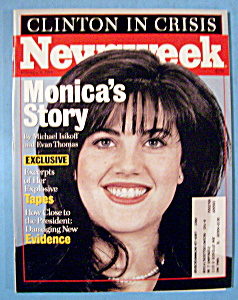 No one in his right mind would argue that art and entertainment are mutually exclusive. Nevertheless, in my book, Life the Movie: How Entertainment Conquered Reality, I examined how entertainment and art act upon viewers differently and how entertainment operates with a voracity that threatens to engulf art. That basic difference is that art is intended to reach each individual in a way that is exclusive to that person, which is why there can be so much debate over, say, Shakespeare. Each of us has his or her own experience. Entertainment, on the other hand, is designed to reach all of us in the same way. The Hollywood grail is to find those formulas that work on everyone – to provide a mass experience.
No one in his right mind would argue that art and entertainment are mutually exclusive. Nevertheless, in my book, Life the Movie: How Entertainment Conquered Reality, I examined how entertainment and art act upon viewers differently and how entertainment operates with a voracity that threatens to engulf art. That basic difference is that art is intended to reach each individual in a way that is exclusive to that person, which is why there can be so much debate over, say, Shakespeare. Each of us has his or her own experience. Entertainment, on the other hand, is designed to reach all of us in the same way. The Hollywood grail is to find those formulas that work on everyone – to provide a mass experience.
It is certainly no wonder that entertainment is kind of indomitable. It not only engulfs art, it engulfs life itself.
And that, as I argued in Life the Movie, was one of the greatest dangers to conventional art. Life itself keeps throwing off narratives – O. J. Simpson, Monica Lewinsky, Robert Blake, Princess Di, Tiger Woods, Britney Spears – that compete with conventional entertainment and conventional works of art.
This was Philip Roth’s complaint way back in 1961 when he admitted that reality was “a kind of embarrassment to one’s own meager imagination” and that the culture “tosses up figures almost daily that are the envy of every novelist.” In effect, art was being undone by life.
And there was more. In 1961, at the very time Roth was issuing his lamentations, the historian Daniel Boorstin was writing a jeremiad, The Image, against the way in which life was being interpenetrated by contrivance so that it lost its genuineness. Boorstin saw the pseudo everywhere. (The book’s subtitle was “A Guide to Pseudo-Events in America.”) And he observed that the illusory had become so potent that his generation was the first to be able to live within its illusions.
Boorstin was prescient, but perhaps not prescient enough. Eventually, we would not only live within in our illusions; our lives would become illusions – our homes sets, our clothing costumes, our life trajectory scripts, our friends and family supporting players.
Our insatiable appetite for entertainment and the competition life poses to art are still very formidable challenges.
But the rise of the Internet poses even greater challenges. Indeed, the Internet has wound up retooling just about our entire relationship to the arts. Much of this is for the good. The Internet has made art far more accessible. It has brought a democracy to both the production and consumption of art. It has broadened our definition of what constitutes art in ways that defy the crepitating art establishment.
And yet lurking within the Internet is another set of elements which may not be so salutary. Let me go further: The Internet may pose a greater threat to the arts than anything in a long, long time if only by facilitating other tendencies in the culture. The question is whether the arts are strong enough to survive those elements or whether, when the arts mutate this time, they will be transformed into something different – something potentially less artistic.
The Internet has changed the venue of the arts.
Now that computer, tablet, and phone screens vie with television and movie screens for our attention, the experience of watching is different. This is especially true of movies for which the communal, theatrical experience has always been so central to both the phenomenological effect of film and the psychological effect. We lose something in the process.
The Internet has changed the audience for the arts.
Connoisseurship in the arts has never extended very far unless one is talking about the movies, television, or popular music. Most fine arts are enjoyed by the relatively few. But the Internet is so “niche-ified,” so narrowly sliced, that aside from YouTube videos of kittens, there are now hundreds, if not thousands or even millions of audiences, where once there may have been dozens at most. I don’t think we know yet how this will affect the nature of art. It may wind up that each of us gets exactly the arts we want. But I suspect that the fewer people who fructify an art, the less vital it may wind up being.
The Internet creates different expectations of the arts.
This is something of which I have personal experience from when I was an undergraduate at Michigan and now as a professional writer. In my undergrad days, there were magazines that would devote an entire issue to a single article. I vividly remember rushing out to get a copy of Harper’s that featured Norman Mailer’s “The Prisoner of Sex” from cover to cover. Nor was it unusual for an article in Esquire to run 15,000 words, as Gay Talese’s landmark profile, “Frank Sinatra Has a Cold,” did.
There was an expectation that readers would be in for the long haul, that they had patience. Those expectations are very different now. To the best of my knowledge, only The New Yorker publishes pieces over 10,000 words in length, and that reduction is due, in large measure, I believe, to the Internet, which has helped shrink our attention spans.
Anyone who writes for the Internet knows the drill. You write short. You lop off introductory paragraphs because you are warned to get to the point immediately. You are told that 700 words is the new 1,500 words. I often feel like the knight in Monty Python and the Holy Grail whose limbs keep getting hacked off. The Internet is just not hospitable to longform journalism or longform anything. It has changed writing, and not necessarily for the better.
The Internet has different resources than many traditional arts.
The Internet has radically changed the finances of art – in part by creating yet another expectation: the expectation that content is largely free and that content providers should, therefore, not be paid. Look at The Huffington Post, surely one of the Internet’s great success stories. And how does the Post pay those who write for it? It pays in vanity. It relies on writers being so desperate to have their ideas and images disseminated that they will do so for nothing – this, while the site itself generates millions of dollars to its owners. Why should this matter? It matters because it de-professionalizes writing and other arts.
When it comes to YouTube videos and other visuals made expressly for the Internet, this can have the aforesaid advantages of opening lines of distribution that would not otherwise have existed. But it also condemns most practitioners to low budgets – a form of Arnheim’s old idea of having to do more with less.
The Internet has changed the form and the very idea of authorship.
With some exceptions here and there, it has never been hard to determine authorship in the arts. We know the writer, the painter, the composer, the director. But the Internet presents a more vexing situation. It has facilitated what I call “WikiArt,” by which I mean a collaboration of dozens, hundreds, or thousands of people. Admittedly, this is not exclusively a function of the Internet. We have had mash-ups, re-mixes, palimpsests, even a book, David Shields’ Reality Hunger, that is constructed completely from paragraphs and sentences from other books. It is just that the Internet both encourages this sort of collaboration and makes it much easier to achieve – but not without some sacrifice.
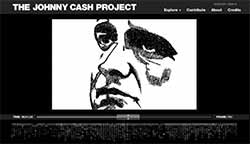
The Johnny Cash Project is a unique crowdsourcing site designed for artists in the digital age.
Take the “Johnny Cash Project.” When Cash died, someone wanted to honor his memory by posting an image of Cash on a website and then inviting people to use various tools on the site to customize the image. Thousands of people participated and continue to do so. So who is the “author” of the image?
When artists like Robert Rauschenberg or Andy Warhol appropriated images, they did so to impose their own commanding sensibility on them. It was the sensibility that converted those images from an American flag or a Campbell’s soup can into art. But whose sensibility commands when there are so many people collaborating? Of whom is the “Johnny Cash Project” an expression? More to the point: Can art exist without a sensibility?
And that raises another question: Where is the art? I am not asking this derisively, as in, “There is no art here.” I am asking, “What is the art object?” Art typically has closure. A play or movie or musical composition ends. A painting has borders, a sculpture occupies a space. But where does the “Johnny Cash Project” end if people keep making additions and alterations? It is not only art without closure; it is art without a discrete art object. This certainly doesn’t destroy art, but it does raise questions about what art is.
The Internet changes the relationship between artist and audience.
As with artistic collaboration, the Internet has introduced a new kind of collaboration: that between artist and audience. Again, this isn’t entirely new. Applause is a form of feedback to which artists can and do react. But the Internet is actively altering the balance of power between the artist and his or her audience.

“Just a flesh wound…” –The Black Knight, Monty Python and the Holy Grail.
I recently read a piece in the New York Times (March 23, 2014) about something called “Wattpad,” a posting website for writers. “The Internet long ago revamped publishing and bookselling,” said the Times. “Now technology is transforming the writing of fiction, previously the most solitary and exacting of the arts, into something that is nearly the opposite. It is social, informal, and intimate, with the results not only consumed but often composed on the fly.”
In Wattpad, writers post stories then “recast them, abandon them, and delete them on whims. . . .” And why do the writers do that? They do it to attract and appease what they call “fans.” And how is one best likely to attract those fans? By allowing them to become part of the writing process. “They can insert comments directly into the text of a story for inline commenting that all readers can see,” says the Times. “They can even sponsor a writer with real money.”
And as for craft: “Wattpad writers freely acknowledge that their manuscripts are often first drafts written as spontaneously as possible.” One writer admitted, “I barely ever reread the chapter before posting because I overthink things and I feel like overediting or trying to use too many words can ruin the story.” She took the words right out of Hemingway’s pen.
Finally, the Internet reverses the relationship between art and artist.
One of the things the Internet threatens is the withering of art itself under the assault of all these forces – perhaps none more potent than “knowingness.” That’s because, I believe, one of the central functions of the Internet is to feed one’s appetite to know things, especially trivial things – one’s need to feel as if he or she is ahead of the cultural curve. If you want to know why there is so much effluvium on the Internet – so much seemingly worthless celebrity gossip – this may be the reason. The Internet empowers us to think we are insiders in a culture where everyone wants the status of the insider.
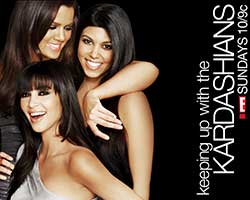 The problem with knowingness is that it can provide a satisfaction that is greater than the satisfaction delivered by either entertainment or art. Let me adduce the Kardashians as an example. I seriously doubt there is anyone in this country who doesn’t know who the Kardashians are. They are ubiquitous in the media and on the Internet.
The problem with knowingness is that it can provide a satisfaction that is greater than the satisfaction delivered by either entertainment or art. Let me adduce the Kardashians as an example. I seriously doubt there is anyone in this country who doesn’t know who the Kardashians are. They are ubiquitous in the media and on the Internet.
Presumably, since they don’t do anything else, the engine of that familiarity is their reality TV show, “Keeping Up with the Kardashians.” But here is the small surprise. Virtually no one watches the show. In a country of 310 million people, the peak rating for the show was three million. And therein lies the perfect example of how knowingness can overwhelm the thing itself. The tail of Kardashian gossip wags the dog of the Kardashian program. And why? Because, I venture, it is more gratifying to know about the Kardashians than to watch their show. Seemingly everyone has to know about them to be considered knowing.
The Kardashians certainly aren’t artists by any stretch of the imagination, but they point the way for how artists trump their art. We often know and care more about the artist than we do about the art, which raises the question: Can the arts survive the interest in the artist?
But it doesn’t end there. There is yet another way in which the artist himself or herself can endanger art – a way that is underscored by the Internet.
A month or so back, I watched an episode of the PBS investigative series “Frontline,” which purported to examine the way in which marketers are using social media to enlist young people to sell products. That was depressing in itself. But I think the show missed the real point, which was this: All these kids seemed to care about was getting some sort of acknowledgment.
As Wattpad might phrase it, they all were desperate for “fans.” But they had nothing to give, no talent to express, to get those fans. At best, “art,” such as it was, was a device to attract fans, as in the case of a 13-year-old girl who posted videos on YouTube of herself singing covers (badly), or of a young boy who first arrived on YouTube as a skateboarder performing tricks, and then, when he saw his fandom declining, graduated to pulling pranks that usually involved scantily clad women, or of a self-appointed social observer whose idiotic blather has won him millions of “fans.” In effect, it isn’t just about knowingness; it is about getting known. And the Internet is not just a knowingness machine; it is a fame machine, albeit for a rather attenuated form of fame.
What does any of this have to do with art?
Just this: when the primary impulse of a culture is to gain some form of acknowledgment, art can often be just another means to that end. Worse, in a narcissistic world where fame is elevated above the values that have generally sustained art, which are to sensitize us to the world, to remind us that there are other people who share the feelings that we feel, to help us understand ourselves and others, and to awaken us to experience, art as we have known it is in real jeopardy. It has lost its wellsprings.
To the extent that the Internet feeds this narcissism, which, one might say, is the opposite of the impulses that underlie art, it attacks art at its roots. In the 1995 film To Die For, about the hunger for fame, Nicole Kidman exclaims how great it would be if everyone had his own television show. To which another character ripostes that if everyone had his own show, there would be nobody left to watch.
But that was before the Internet – before the desire for fame buried the desire for self-expression.
This essay was adapted from a presentation by Gabler during the April 2014 upstArt festival at U-M.

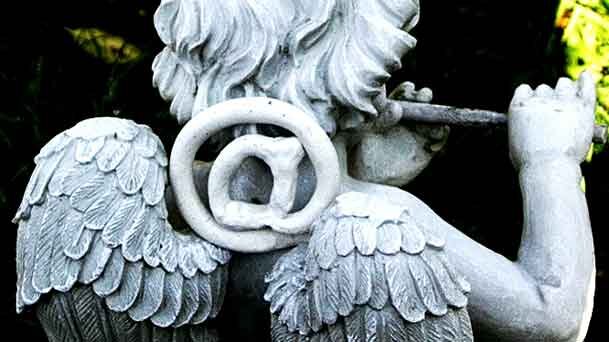



William Patterson - 1974, 1975
Wonderful points!
Reply
Herb Bowie - 1973
Great piece, Neal (even though I read it via the Internet!). Art requires us to cultivate a private, personal sensibility, then to fashion a public expression of that sensibility, then to expose it to a potential audience. The compulsion to instantly create shareable mementos of every aspect of our lives nips this whole process in the bud — even worse, it devalues the whole idea of cultivation of a personal sensibility.
Reply
Ed Zyniewicz - 1963, 1964
Art to me has always been defined in leisurely points of reference and very personal ones at that. The internet has not changed that but only created millions more of those.
Reply
Greg Higby - 1977
Provocative piece!
As a sidebar topic, I hope that readers realize that the Internet is endangering printed material, especially books and journals, in our research libraries. Because these items are scanned and available via the Web, librarians are throwing away thousands of art books as well as journals that contain graphic images in their original form and resolution. We need to slow this process before too much is lost forever.
Reply
Jeffrey Larson - 1985
Wonderful article Mr. Gabler. I would not be surprised if the a younger crowd gains interest in visiting the arts the same way a younger crowd has recently embraced vinyl music and film photography.
Reply
Jeff Lewin - 1975
Thank you, Neal. (I would have preferred to respond anonymously, to demonstrate that my goal was to express appreciation, not to attain fame by association or as proof of knowingness.) The Internet does pose ironic challenges.
Reply